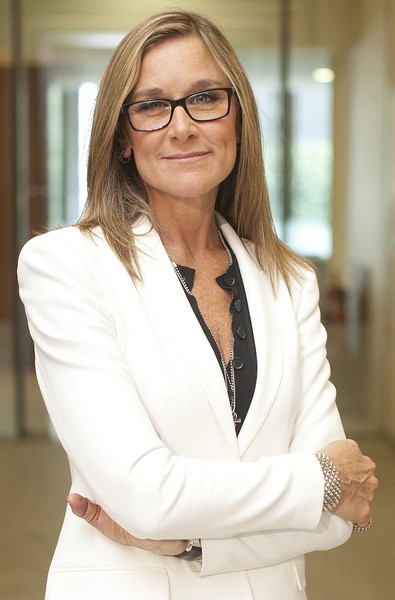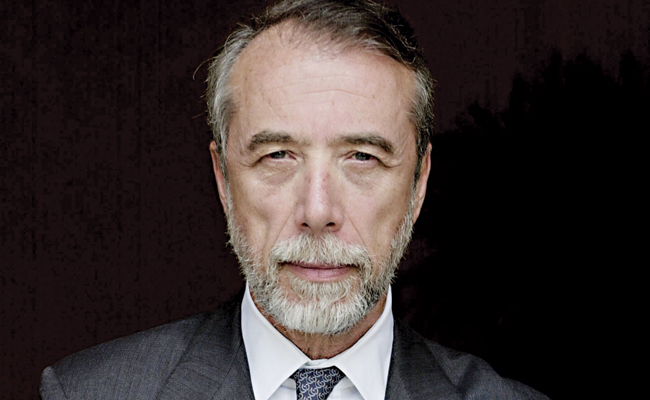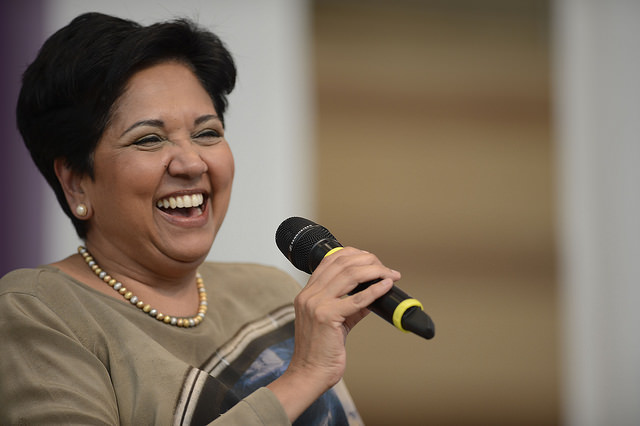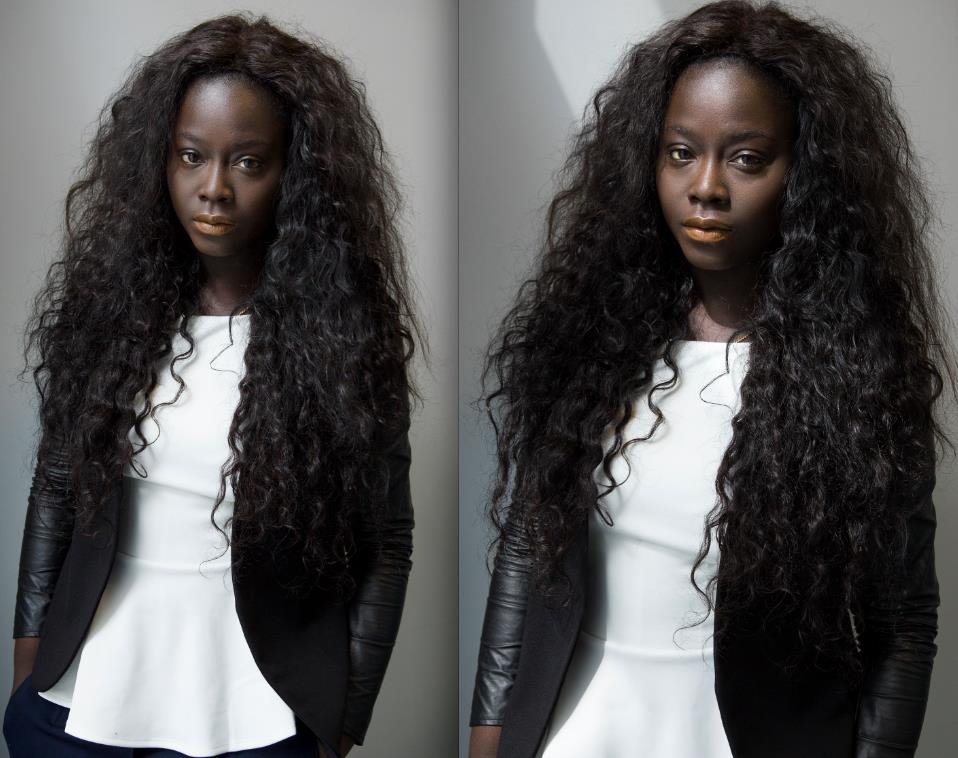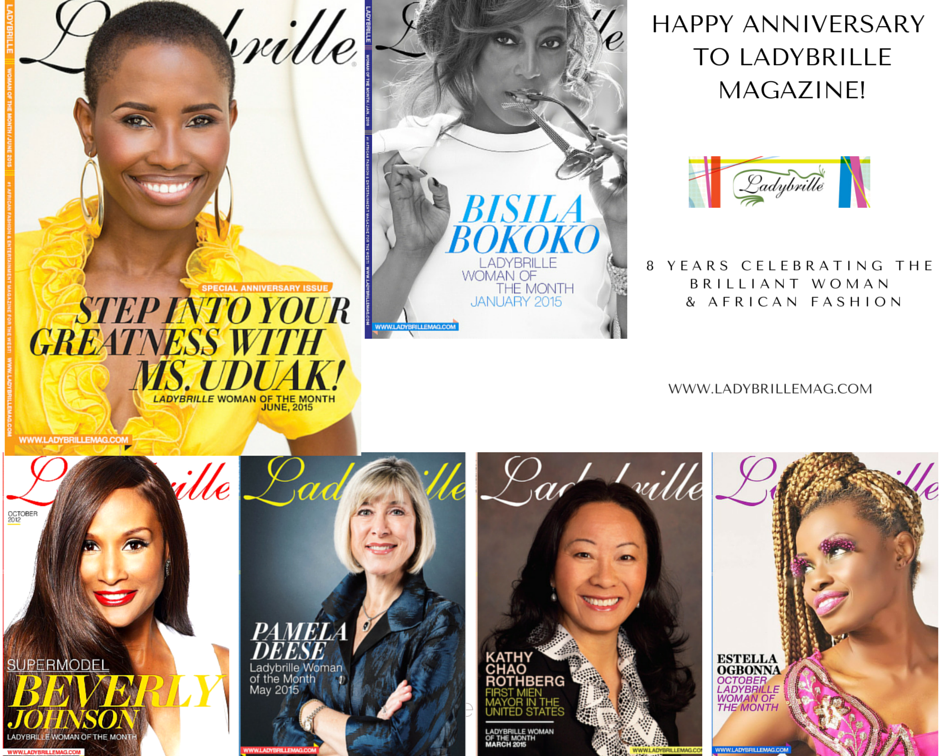 Burberry’s CEO on Turning an Aging British Icon into a Global Luxury Brand
Burberry’s CEO on Turning an Aging British Icon into a Global Luxury Brand
by Angela Ahrendts
The Idea: Before Angela Ahrendts became Burberry’s CEO, licensing threatened to destroy the brand’s unique strengths. The answer? Centralize design and focus on innovating core heritage products.
When I became the CEO of Burberry, in July 2006, luxury was one of the fastest-growing sectors in the world. With its rich history, centered on trench coats that were recognized around the world, the Burberry brand should have had many advantages. But as I watched my top managers arrive for our first strategic planning meeting, something struck me right away. They had flown in from around the world to classic British weather, gray and damp, but not one of these more than 60 people was wearing a Burberry trench coat. I doubt that many of them even owned one. If our top people weren’t buying our products, despite the great discount they could get, how could we expect customers to pay full price for them?
It was a sign of the challenges we faced. Even in a burgeoning global market, Burberry was growing at only 2% a year. The company had an excellent foundation, but it had lost its focus in the process of global expansion. We had 23 licensees around the world, each doing something different. We were selling products such as dog cover-ups and leashes. One of our highest-profile stores, on Bond Street in London, had a whole section of kilts. There’s nothing wrong with any of those products individually, but together they added up to just a lot of stuff—something for everybody, but not much of it exclusive or compelling.
In luxury, ubiquity will kill you—it means you’re not really luxury anymore. And we were becoming ubiquitous. Burberry needed to be more than a beloved old British company. It had to develop into a great global luxury brand while competing against much larger rivals. Among luxury players, Louis Vuitton Moët Hennessy (LVMH) had almost 12 times—and Pinault-Printemps-Redoute (PPR) more than 16 times—Burberry’s revenue. We wanted a share of the disposable income of the world’s most elite buyers—and to win it, we’d have to fight for prime real estate in the world’s most rapidly growing consumer markets. In many ways, it felt like a David-and-Goliath battle.
On the surface, I might have seemed an unlikely CEO for a company that was considered quintessentially British. I was raised in a small town in Indiana and educated at Ball State University. I was a classic midwesterner — something the Financial Times had fun mocking when I first took the job. But I’d been fortunate enough to work with and learn from some of the most inspirational leaders in the fashion industry, from Paul Charron to Donna Karan. And I had 25 years of experience on my side.
I also clearly had one attribute that made me a good fit: I admire and respect great brands and helped to build some over the years. From Apple to Starbucks, I love the consistency—knowing that anywhere in the world you can depend on having the same experience in the store or being served a latte with the same taste and in the same cup. That’s great branding.
Unfortunately, Burberry didn’t have a lot of that. An experience in any given Burberry store in the world might be very different from the customer’s previous one. As part of my transition, I spent six months working closely with my predecessor, hitting the road to get a sense of Burberry worldwide. In Hong Kong, I was introduced to a design director and her team, who proudly showed me the line they were creating for that market: polo shirts and woven shirts and everything with the famous Burberry check, but not a single coat.
Then we went to America, where I was introduced to another design director and design team. This team was creating outerwear, but at half the price point of that in the UK. Furthermore, the coats were being manufactured in New Jersey. So we were making classic Burberry raincoats that said “Made in the U.S.A.” I later learned that we had outerwear licensees in Italy and Germany making trench coats that were even cheaper than those in the United States.
Great global brands don’t have people all over the world designing and producing all kinds of stuff. It became quite clear that if Burberry was going to be a great, pure, global luxury brand, we had to have one global design director. We had an incredible young designer named Christopher Bailey, with whom I’d worked at Donna Karan and who I knew was a sensational talent. So I introduced him early on as the “brand czar.” I told the team, “Anything that the consumer sees—anywhere in the world—will go through his office. No exceptions.”
Within a year we had let the entire Hong Kong design team go and had brought some of the U.S. outerwear team to the UK, where we centralized all our design under Christopher. We closed the New Jersey factory—along with one in Wales that was making polo shirts—and began investing in our Castleford facility in Yorkshire, which makes our heritage rainwear. Closing the Welsh factory caused a political firestorm—I was even called to testify before Parliament alongside Burberry’s highly respected chairman—but we stood behind our decision. As a company, we always do what’s best for the brand, because our job is to protect it and keep it powerful and relevant. If we do that, even if it involves closing a factory with 300 employees, many more jobs will be created in time. We’ve doubled the head count at Castleford since then and almost tripled our global workforce to nearly 10,000, adding more than 1,000 jobs in the UK over the past two years alone.
Burberry is 156 years old; its coats were worn in the trenches of World War I by British soldiers, and for decades thereafter they were so much a part of British culture that the company earned a royal warrant, making it an official supplier to the royal family. Sir Ernest Shackleton wore a Burberry during his Antarctic expedition. Movie legends wore them on the silver screen. For more than a century the Burberry trench coat was cool. But when I became CEO, outerwear represented only about 20% of our global brand business. Fashion apparel and check accessories were leading our strategy. The more we examined the situation, the clearer it became that this wasn’t consistent with our luxury vision.
It’s not unusual for a luxury company to be born from a single product and then diversify. Louis Vuitton began with luggage, and Gucci with leather goods. But even as they diversified, each continued to earn the majority of its revenue from its original core products. Surveying the industry, we realized that Burberry was the only iconic luxury company that wasn’t capitalizing on its historical core. We weren’t proud of it. We weren’t innovating around it.
Furthermore, we were almost ignoring some of our strongest assets. Our weaving facility in Yorkshire produced the exclusive waterproof gabardine on which the company was founded. Thomas Burberry had created this fabric and the trench coat design for those early military and exploration commissions. The weaving facility was near the Castleford trench coat factory, in the north of England—fortunately, we hadn’t resorted to outsourcing in faraway places. What could be better than an authentic heritage brand with a great vertical supply chain? But we weren’t investing in it. We weren’t optimizing it.
After brainstorming and formalizing our instincts, we commissioned a consulting firm to provide us with competitor benchmarking. Our instincts confirmed, we clearly saw the way forward: We would reinforce our heritage, our Britishness, by emphasizing and growing our core luxury products, innovating them and keeping them at the heart of everything we did. I have to admit that some managers were cynical. A lot of them had been at Burberry for a really long time. I’m sure they left saying, “Focusing on trench coats—that’s our strategy?” But most of us were confident that it was the right plan.
The decision to focus on our heritage opened up a wealth of creativity. Christopher and the designers and marketers all started dreaming up ways to reinforce the idea that everything we did—from our runway shows to our stores—should start with the ethos of the trench.
At the same time, we had to shift Burberry’s historical corporate structure to reflect this new, purer point of view. We had great people, but we were organized like a department store. We had a person over each men’s category and a person over each women’s category. They made decisions that worked for their departments but might not make sense for the whole business. We needed to change, to focus on the big picture: the brand. In addition to putting Christopher in charge of all design, we had to hire functional expertise—a head of corporate resources, a head of planning, and a chief supply chain officer. It was all pretty basic, but necessary if we were to reach our goals.
To strengthen our retail operation, we decided to focus on markets where our competitors already had a presence, signaling the right kind of consumers to support a luxury brand. As our first blueprint for expansion, we identified every market in the world where two of our peers had stores and we had none. In the past six years we’ve opened 132 new stores, and we’ve refocused our retailing staff on outerwear. Trench coats are among the most expensive items we sell (many of them are priced over $1,000), but the staff was least equipped to sell them. Our salespeople had become accustomed to selling what was easy—relatively inexpensive items such as polo shirts. On commission, they’d be better off selling one trench coat than 10 polo shirts. They understood the math, but they needed tools to fully appreciate and communicate why the trench was the best investment for their customers. We established strong sales and service programs to put product education front and center. We created videos to demonstrate Burberry craftsmanship: All the collars are hand-rolled and hand-stitched. We equipped our sales associates with iPads and our stores with audiovisual technology to show these videos to best effect. We knew that beautiful, compelling content would connect customers to the brand and our iconic trench.
We also began to shift our marketing efforts from targeting everyone, everywhere, to focusing on the luxury customers of the future: millennials. We believed that these customers were being ignored by our competitors. This was our white space.
The decision was not without controversy; we were choosing to aim squarely at a generation that had no current knowledge of Burberry’s core product. The effort had to be led by design—we needed to create outerwear that was innovative, cool, and so inviting that people would become repeat customers. Burberry used to have just a few basic styles of trench coats: Almost all were beige with the signature check lining, and the differences between them were minor. Now we have more than 300 SKUs, from capes and cropped jackets to the classic Burberry trench in a range of vibrant colors and styles, with everything from mink collars and alligator epaulets to studded leather sleeves. We had to infuse the new lines with our heritage. We also had to rethink our entire marketing approach for these customers—to make it digital. When we began, we had a few regional websites, so we consolidated them and redesigned everything on one platform. It showcases every facet of the brand. It has become the hub of all our marketing and branding, and a trench coat is always one of the first things you see when you go online. The site is designed to speak to that millennial consumer through emotive brand content: music, movies, heritage, storytelling. And we understand how critical it is. More people visit our platform every week than walk into all our stores combined. And the majority of our employees at corporate headquarters in London are under 30. They understand who we are trying to reach.
Now every major new initiative has the trench coat front and center. In 2009 it was the inspiration for our first social media platform, artofthetrench.com. Celebrating the iconic trench and the people who wear it, the site has had more than 2.5 million visitors to date. Last year, when we took our first step into customization, it was never in question that we would launch with the iconic trench. Burberry Bespoke went live on burberry.com offering some 12 million possible styles, and we are now introducing it in our physical stores in London and Chicago. And as we take direct control of our fragrance and beauty business next year, we will fully leverage the trench—as we did so successfully in the launch of Burberry Body perfume.
In a way, we’re right back to our roots. I always remind employees that we didn’t found the company, Thomas Burberry did—at the age of 21. He was young. He was innovative. We say that his spirit lives on, and that it’s this generation’s job to keep his legacy going.
The company transformation paid off. Today 60% of our business is apparel, and outerwear makes up more than half of that. At the end of fiscal 2012, Burberry’s revenues and operating income had doubled over the previous five years, to $3 billion and $600 million, respectively.
That’s not to say it has all been smooth sailing. Getting Burberry back on track took years of hard work, and we’re still navigating tricky waters in a cyclical global luxury market. In September 2012 we took the unusual step of issuing a sales update ahead of our quarterly earnings report: We were seeing a slowdown in traffic globally. A few weeks later, with better insight into the numbers, we were able to report that although traffic was down, the quality of our sales was actually improving: We were realizing higher transaction values, better conversion rates, and greater demand for our more elevated Prorsum and London lines. So although the aspirational customers at entry price points are behaving more cautiously, the brand is resonating ever more strongly with our core luxury audience.
We’ve always said we’re not immune to the ebb and flow of the macroeconomy, but that doesn’t change our vision. We have absolute clarity about—and commitment to—our proven strategies, which gives us confidence for the long term. That’s how we run our business and how a great global brand is created. In 2011 Burberry was named the fourth fastest-growing brand globally by both Interbrand (behind Apple, Google, and Amazon) and WPP/BrandZ (behind Facebook, Baidu, and Wells Fargo). In 2012 it was the fastest-growing luxury brand on Interbrand’s index. That’s beyond what we imagined was possible back in that strategy meeting in 2006.
Today it’s taken for granted inside the company that the trench coat must remain our most exciting, most iconic product. It guides all our decisions. Our sales associates understand it. This product is who we are. That is evident when I observe what our employees wear to work. If you ask a Burberry senior executive how many trench coats he or she owns, the answer is likely to be eight or nine. Everyone has a packable version. Everyone has a white one. Everyone has an evening one. We have all different lengths.
As for me, I don’t have an exact count, but I can safely confess to owning a dozen. They’re not just raincoats anymore. They are the foundation of a great brand and a great company.
First shared on HBR
Photocredit: Simon Dawson/Bloomberg via Getty Image
Founded in 2007, Ladybrille® Magazine is a California based pioneer digital publication demystifying the image of Africans in the west through contemporary African fashion and celebrating the brilliant woman in business and leadership, with an emphasis on the African woman in the diaspora. Our coverage includes stories on capital, access to markets, expertise, hiring and retention, sales, marketing, and promotions.

